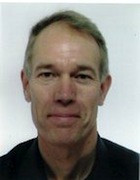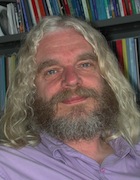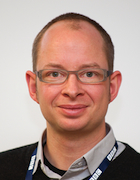Home | Program | Papers | Demonstrations | Venue | Committee | Sponsorship | Registration
Demonstrations of sound field control systems will be running during the conference.
Regular breaks with tea/coffee/juice and cakes or pastries will be provided.
| Time | Monday 2nd September | Tuesday 3rd September | Wednesday 4th September |
|---|---|---|---|
| 0900–1000 | Keynote lecture: Armin Kohlrausch | Keynote lecture: Frank Melchior | |
| 1000–1040 | Registration | Paper Session 3: Psychoacoustics | Paper Session 7: Sound field control for multichannel audio |
| 1040–1100 | Break | Break | |
| 1100–1120 | Conference opening | ||
| 1120–1220 | Keynote tutorial: Stephen Elliot | Paper Session 4: Psychoacoustics | Paper Session 8: Room acoustics control |
| 1220–1340 | Lunch | Lunch | Lunch |
| 1340–1440 | Paper Session 1: Sound field control theory and applications | Paper Session 5: Sound zones | Paper Session 9: Wave field synthesis |
| 1440–1500 | Break | ||
| 1500–1520 | |||
| 1520–1600 | Paper Session 2: Sound field control theory and applications | Break | |
| 1600–1620 | Workshop 2: Emerging techniques, applications and opportunities for sound field control | ||
| 1620–1700 | Workshop 1: The interplay between engineering and perception in the design of sound systems for listeners | ||
| 1700–1720 | Paper Session 6: Transducers, array design, and beam forming | ||
| 1720–1740 | Poster preview presentations | ||
| 1740–1800 | |||
| 1800–1830 | Sponsor Seminar: Yamaha Commercial Audio | ||
| 1830–1845 | Poster session | ||
| 1845–1930 | |||
| 1930–2100 | Buffet and drinks | Conference Dinner in Guildford Cathedral Refectory |
Download the full preliminary program
We are pleased to welcome three influential keynote speakers on the main themes of the conference:
 |
Professor Stephen Elliott, Adaptive Systems, ISVR, University of Southampton, UK |
Active control of sound fields: enhancing signals and attenuating noise
The use of active sound control to attenuate unwanted acoustic noise is now well established. The technique uses controllable secondary sources of sound to generate a sound field that destructively interferes with the sound field from the original, primary, noise source and is now widely used to reduce noise in headphones, aircraft and cars.
It is a short step from attenuating some frequencies using active control, to enhance others in a controlled way and recent active control systems in cars are designed to improve sound quality by doing both. More generally, arrays of controllable sources can be used to manipulate the spatial distribution of sound, in order to reproduce an audio sound field in one region of space, for example, while minimising the sound field in other regions. This has applications in areas such as virtual acoustics, the design of loudspeaker arrays and personal audio.
In this tutorial the acoustics and signal processing involved in active control will be reviewed: both for enhancing audio signals and for attenuating acoustic noise. The physical limits due to the geometry of practical arrays will be discussed, together with the signal processing design methods that can be used to implement robust practical arrays, whose performance approaches these geometric limits.
| Professor Armin Kohlrausch, Philips Group Innovation and Eindhoven University of Technology, Netherlands |  |
Evaluation of spatial sound fields; how far can we get with perceptual models?
The development of sound reproduction systems is usually influenced by knowledge of human auditory perception. Firstly, this perception knowledge provides input to the definition of system requirements, e.g., when defining limits for the frequency range. Secondly, it plays a role in the evaluation of a given solution, for instance, by using perception models as a replacement for human listeners. With the development of more and more advanced methods of sound field creation and sound field control the requirement for perceptual models has also grown, in particular with respect to spatial sound field characteristics. In this presentation, I will give an overview of recent developments in the modeling of spatial hearing, and give examples of what type of spatial sound characteristics have successfully been evaluated by purely algorithmic means.
 |
Dr Frank Melchior, Head of Audio Research, BBC, UK |
Creative Sound Field Control
Sound field control has been developed significantly over the last decades. From Wave Field Synthesis to Higher Order Ambisonics to sound field control in live venues and sound reinforcement, several systems have been proposed and found its way into application.
While this systems and reproduction methods are better understood and important links to perception are more and more established unlocking their creative potential is still at the beginning. From the perspective of a content provider the creative use of such potential future reproduction system is promising. Furthermore an implementation in uncontrolled environments and domestic environments is necessary and an important area for further research.
This talk will focus on the creative use of sound field control. The applications of sound field reproduction system will be discussed from the creative and user interface perspective. The implementation of these technologies in content production will be discussed. A focus will be how to unlock the creative potential given by novel signal processing and how it can made available to producers and creatives.
The interplay between engineering and perception in the design of sound systems for listeners
Frank Melchior (moderator), BBC Research & Development, MediaCity, Salford, UK
Jung-Woo Choi, Korea Advanced Institute of Science and Technology (KAIST), Daejeon, Korea
Glenn Dickins, Dolby Laboratories, Sydney, NSW, Australia
Armin Kohlrausch, Philips Group Innovation and Eindhoven University of Technology, Eindhoven, The Netherlands
One need look no further than MP3 for an example in audio engineering where incorporating consideration of the listener has led to engineering design that the consumer has embraced, with huge benefits in terms of practical products and services, as well as investment in psychoacoustical science. This workshop examines the interplay between technical and subjective aspects of audio system design, which may be treated as distinct yet complementary disciplines or increasingly as a powerful inter-disciplinary enterprise.
Emerging techniques, applications and opportunities for sound field control
Boaz Rafaely (moderator), Ben-Gurion University of the Negev, Beer-Sheva, Israel
Alain Berry, Université de Sherbrooke, Sherbrooke, Quebec, Canada, and CIRMMT, McGill University, Montreal, Quebec, Canada
Karlheinz Brandenburg, Fraunhofer Institute for Digital Media Technology IDMT, Ilmenau, Germany and Ilmenau University of Technology, Ilmenau, Germany
Gavin Kearney, University of York, York, UK
Emanuël A.P. Habets, International Audio Laboratories, Erlangen, Germany
The range of potential application domains for the techniques and solutions currently being developed in relation to sound field control spans scenarios from those that are highly specialist to those that appeal to the mass market. This workshop will debate a number of interesting emergent methods and approaches, and provide perspectives on potential opportunities for applications of sound field control in the future.
An introduction to Yamaha AFC3 - 3rd generation Acoustic Field Control
Ron Bakker (moderator), Yamaha Commercial Audio Systems Europe, London
Takayuki Watanabe, Yamaha Corporation, Spatial Audio Group, Hamamatsu, Japan
Tim harrison, Yamaha Commercial Audio Support Centre, London
Until very recently, acoustic enhancement systems required large numbers of independent channels and powerful DSP processing, making them expensive, hard to integrate and inflexible. With the introduction of the latest powerful DSP platforms - and more specifically FIR processing - the number of transducers and hardware infrastructure required can be drastically reduced (along with the associated costs), whilst increasing the reliability and functionality of the installation. This development makes new DSP based acoustic enhancement systems suitable for a wider variety of venues. Not only concert halls, but also small theatres, practice rooms, churches, multi-purpose halls and auditoria can now benefit from the technology to support performances that require a naturally enhanced acoustic environment.
An overview of the types of systems and their applications that have been installed in the past decades is presented, focusing in on the basic theoretical concepts, advantages and disadvantages. The presentation will include a demonstration using a temporarily installed AFC3 system.
